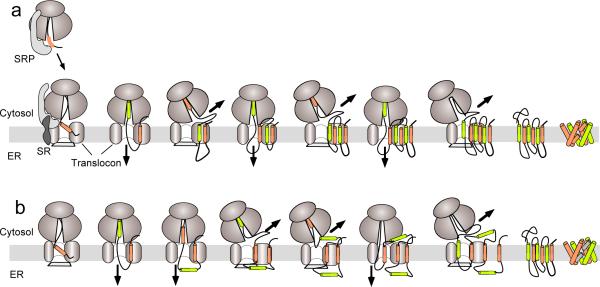Figure 1.
Models of polytopic protein biogenesis. (a) Cotranslational biogenesis is initiated as signal recognition particle (SRP) interacts with a signal sequence, binds its receptor (SR) at the ER membrane, and transfers the ribosome nascent chain complex to the Sec61 translocon. Signal sequences (tan cylinders) stimulate ribosome binding and open the translocon pore to initiate peptide movement into the ER lumen. Stop transfer sequences (green cylinders) terminate translocation and redirect the elongating nascent chain beneath the ribosome and into the cytosol. Each sequential TM therefore alters the direction of nascent chain movement through the RTC (bold arrow) to establish transmembrane topology from N- to C-terminus one helix at a time. (b) During AQP1 biogenesis, TM2 fails to terminate translocation, TM3 is initially inserted into the translocon in a type I topology, and TM4 transiently resides on the cytosolic face of the membrane. This sequence of events generates a four-spanning intermediate that is converted to a six spanning topology during or after synthesis of TMs 5–6.

